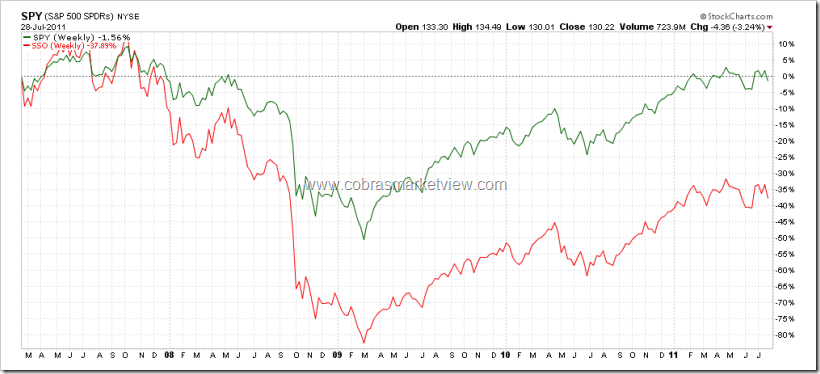First of all, this site is for traders, if your investment horizon is like 10 years, 20 years, this site is not for you. However, I do have a simple strategy for your long term investment. The below was originally written for Canadian investors but since the strategy also involves the S&P 500 index, so it applies to US investors as well, all you need to do is following the same rule as mentioned in the chart 4.9.1 TSX Long Term Trading Signals, but use RSP instead the suggested XIU.TO.
Check and save the link here: 4.9.1 TSX Long Term Trading Signals. It's in my public chart book so as long as I'm still in the business, the link will be valid and up to date.
- Please note, it's a monthly chart, so you have to check it at the beginning of every month for the PREVIOUS BAR, not the current bar because the current bar means the current month is not completed yet when you check.
- It's for your RRSP/401K, a long term, 10 years, 20 years kind of investment. I back tested the history to make sure the theory at least worked in the past but there's no guarantee it works for the future although I'm confident it'll work.
Below are the design details, I think you better know so that you'd have confidences in using it.
Why ETF instead of Mutual Fund?
I think you already know that 80% mutual fund managers don't beat the market but still get rich for managing the fund. So why bother to pay them? Therefore the theory is to buy index fund to strictly follow the market and have the lowest management fee. The ETF is even better than index mutual fund because unlike the mutual fund that has mini holding period, usually 3 months, ETF on the other hand, can buy and sell at any time like stock.
OK, now you understand ETF, here's your main resources for ETF: http://ca.ishares.com/home.htm. Basically all you need are XIU which is TSX 60 Index Fund: http://ca.ishares.com/product_info/fund/overview/XIU.htm
Why put everything into just one basket?
Basically you should forget about what you learnt about invest into different assets as nowadays it's only one market, everything is related so if one basket means one risk, invest into 3 baskets, your risk is tripled. And actually, XIU itself is a lot of basket, it's the top 60 Canadian companies, so there's no way an index goes to zero and as an index, it guarantees you that it'll rise in the long run because those big guys keep changing component stocks to make sure the index always look good otherwise nobody would invest into the stock market.
OK, now you understand the one basket theory, so why choose Canada market instead of Europe or Japan or Emerging market, at least why not US?
Two reasons: First of all, if you invest ETF that follows foreign index, it's always hedged against that country's currency, so you have to take the currency change into consideration. Secondly, Canada basically is resource related market, which is heavily related to inflation. Can you image a world without inflation? So as long as there's inflation, Canada market is guaranteed to rise. Just check the link I give you, see SPX, it broke below the year 2002 lows in 2009 while TSX is far above it. Why? You now understand, because it's inflation. So I think stick to Canada market is a better choice.
You probably know that in the long run that invest into small to mid caps are far better than large cap, so why still XIU?
Well, that's true and you can buy small cap ETF listed in the ca.ishares.com. Just those ETFs have very low volume which I don't like but you can buy them if you want as ETF liquidity is guaranteed.
Where to buy XIU?
As long as your current mutual fund account allows to buy stock, the XIU should be available. Otherwise you can buy TSX Index Mutual Fund instead, just don't forget the mini holding period therefore I don't recommend doing so.
You probably heard leveraged fund such as listed here: http://www.horizonsetfs.com/pub/en/Default.aspx, so why no leveraged fund?
Well, long story, as an investor, investing in a leveraged fund will result in losing everything that because the leveraged fund had time decay which guarantees you it drops more than it rises. See chart below, which is SPY (green) vs its doubled leveraged fund SSO, clearly in the long run, SSO performs far worse than the SPY.

